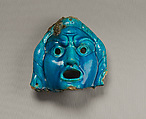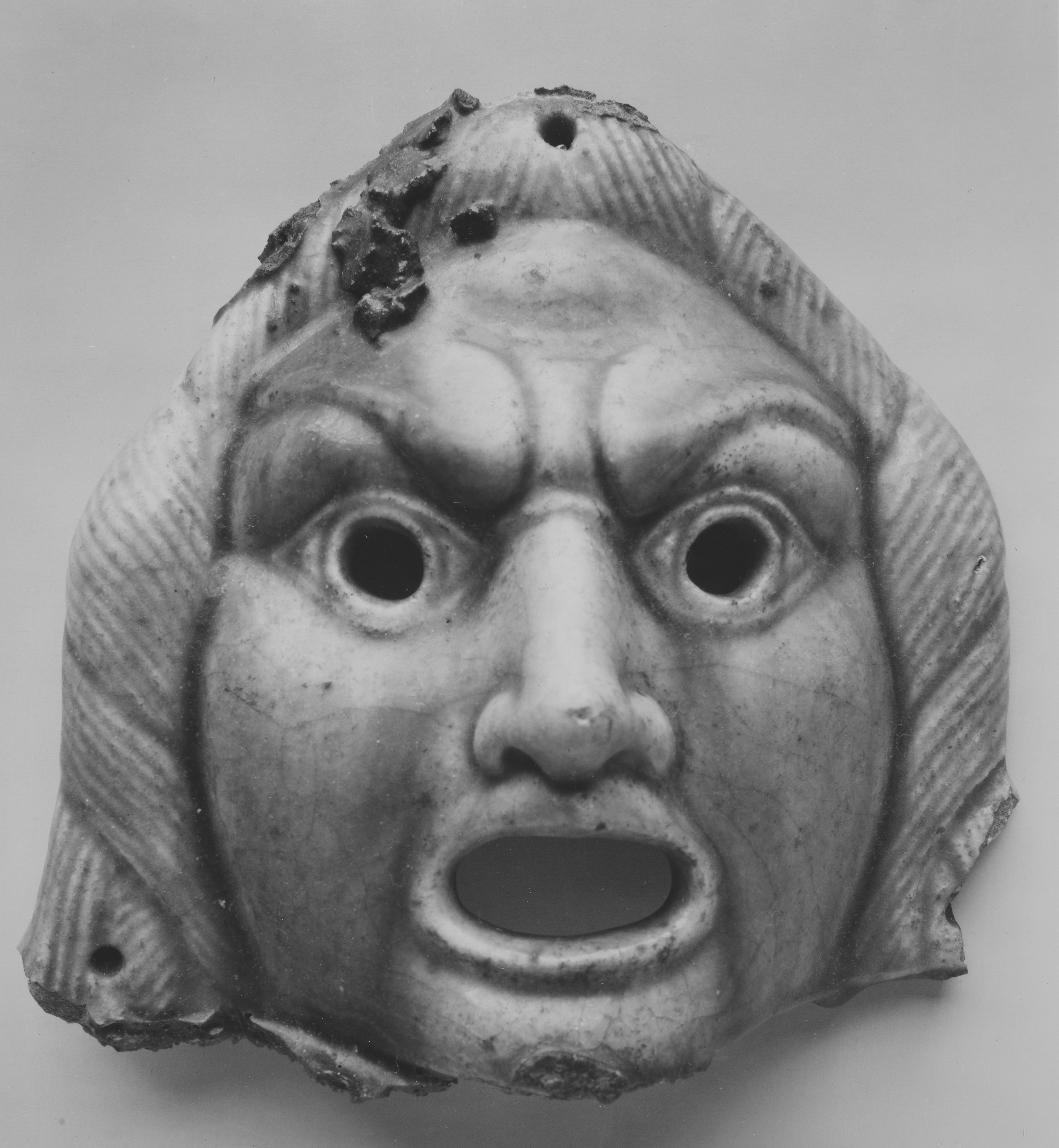Theatrical mask for offering
Roman Period
This mask and the mask 26.7.1021 are too small and brittle to have served as actual theater masks. They refer to the god Dionysus, patron of the theater and god of rebirth; in Egypt he was equated with Osiris. Terracotta theater masks are found in burials and sanctuaries in Greece, in sanctuaries and as garden decorations in Italy. In Egypt, they are known only from burials, as offerings to Osiris/Dionysus. Terracotta masks from Antinoopolis in Middle Egypt probably originate in tombs, and a terracotta theater mask was found in a Roman Period chapel over a burial at Hawara.
The masks 26.7.1020-.1021 and the ram 26.7.1019 are said to have been part of a find of numerous faience objects at Arsinoe, capital of the Fayum region.
Due to rights restrictions, this image cannot be enlarged, viewed at full screen, or downloaded.
This artwork is meant to be viewed from right to left. Scroll left to view more.



